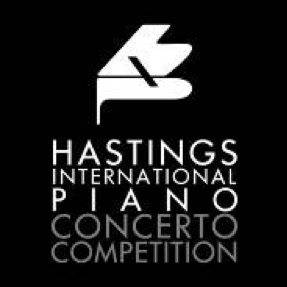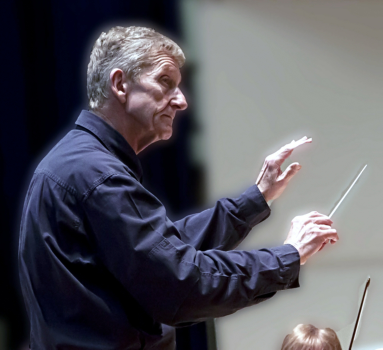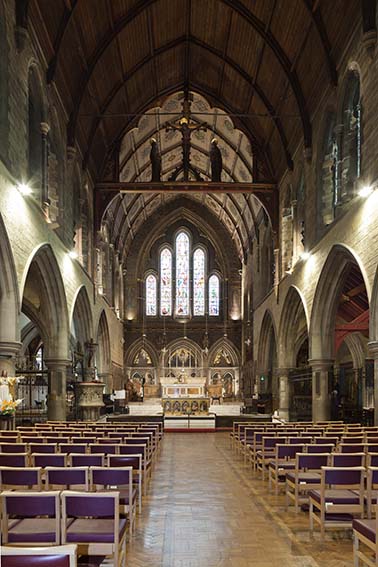XIAOGANG YE – THE ROAD TO THE REPUBLIC
CHINA NATIONAL SYMPHONY ORCHESTRA, CHORUS & SOLOISTS
BEIJING PHILHARMONIC CHOIR
DEUTSCHE STAATSPHILHARMONIC RHEINLAND-PFALZ
JIA LU & FRANCK OLLU, conductors
NAXOS 8.579089 67’01
This disc collects recordings of two recent works by this leading Chinese composer. Both works draw on traditional music. The Road to the Republic is a cantata dating from 2011, commemorating the centenary of the Revolution. Cantonese Suite (2005) is a large scale orchestral work. Both combine the traditional with Ye’s contemporary voice.
FLORENCE PRICE – SYMPHONY NO 3
ORF VIENNA RADDIO SYMPHONY ORCHESTRA, JOHN JETER, conductor
NAXOS 8.559897 66’48
The music of Florence Price is slowly experiencing more exposure and appreciation. Written between 1932 and 1940 the three orchestral works here also combine traditional music from a particular culture with more contemporary techniques and ideas. The Symphony No 3 in C minor is a 4 movement work, the 3rd movement being the Juba, recently aired at the Last Night of the Proms. Coupled with this are The Mississippi River and Ethipia’s Shadow in America. There is a filmic quality to much of the music here and much to explore and enjoy.
TOWARDS THE FLAME – ECCENTRIC PIANO WORKS
ALEXANDER SCRIABIN/RUED LANGGAARD
GUSTAV PIEKUT, piano
NAXOS 8.574312 56’15
The title of this CD was enough to make me want to listen and when I discovered its contents I was even keener. This is a lovely collection of music that often defies description and which comes from highly individual composers exploring spiritual themes without borders. A very welcome CD to return to for immersive listening. Included among the pieces here are two of Scriabin’s Sonatas (Nos 9 & 10) and Langgaard’s Afgrundsmusik (Music of the Abyss). Dedicated performances are given by Gustav Piekut throughout the programme.
IAN KROUSE – SYMPHONY NO 5 ‘A JOURNEY TOWARDS PEACE’
MICHAEL DEAN, bass-baritone
JENS LINDEMANN, trumpet
UCLA BRASS QUINTET
SEOCHO PHILHARMONIA, conductor JONG HOON BAE
NAXOS 8.559907 69’23
I sometimes find it difficult to get into the mindset of those who have commissioned works to commemorate historic occasions, particularly when they are linked to military action. Nevertheless this music is both effective and affective, combining both the triumphant and the sombre. I knew nothing of contemporary American composer Ian Krouse’s music before hearing this disc. His Symphony No 5 ‘A Journey Towards Peace’ (which includes text by Walt Whitman) is coupled with Fanfare for Heroes of the Korean War. Also included are two Symphonies of Strings, both of which draw on different musical traditions.
MATTHIAS KRUGER – AIN’T NUTHIN’ BUT FAIRY DUST
ENSEMBLE ASCOLTA, director NICHOLAS KOK
ENSEMBLE BRUCH
WDR SINFONIEORCHESTER, director ELENA SCHWARZ
ENSEMBLE INNERSPACE
WERGO WER 64352 61’31
A CD for the adventurous listener. These recent electroacoustic works by Matthias Kruger are very absorbing. Drawing on a range of techniques, traditions and technology there is great crossover between styles and genres, signifying the great freedom and wealth of experience that today’s composers enjoy. A comprehensive booklet provides helpful background to the three works – Le vide a perdre, Wie ein stuck fett (redux) and Bellygoat Boom. There is also a link to a further audio/visual performance available online, Sweep over me them dusty brooms.
A BELFAST CHRISTMAS
BELFAST CATHEDRAL CHOIR, conductor MATTHEW OWENS
GRAINNE MEYER, harp
JACK WILSON, organ
RESONUS RES10292 67’59
The newly formed all-adult choir of Belfast’s St Anne’s Cathedral makes its debut on Resonus with this lovely programme of carols from the twentieth century onwards. Composers include four Philips – Stopford, Ledger, Moore and Wilby! John Gardner and Elizabeth Poston also feature with Gary Davison, John Ireland, Patrick Hadley, John Rutter, Bob Chilcott and an arrangement of Praetorius by Erling Pedersen. Matthew Owens’ Toccata on Good King Wenceslas is also included. Many of these fine recordings are world premieres.
CHRISTMAS BELLS – ORGAN MUSIC FROM BELFAST CATHEDRAL
MATTHEW OWENS, organ of Belfast Cathedral
RESONUS RES10293 78’29
A companion release to the above (although it stands well completely on its own) is this brilliant recital by Matthew Owens. This is a great collection of seasonal organ music, much of it referencing traditional carols. The title track is a piece by Howard Blake. It also includes chorale preludes (and the canonic variations) by JS Bach, JG Walther and Flor Peeters. Noels by Daquin and Guilmant represent another tradition. Other more recent composers featured are Philip Wilby, Gary Davison and Philip Moore. Matthew Owens’ own Prelude on Yorkshire is included and the CD ends with Garth Edmundson’s exuberant Toccata on von Himmel hoch.
SP



 Frank Martin (1890-1974) is not a musical household name but an interesting discovery. A French Swiss composer, he founded, and worked with, the Geneva Chamber Music Society and this three movement Trio on Popular Irish Folk tunes dates from 1925 and feels nicely international. I liked the lyrical adagio, more or less a lament in the middle of the sandwich, led off of by Peter Adams whose cello sound is compellingly warm. And there’s a deliciously quirky account of The Irish Washerwoman in the finale with lots of minor chords and dissonance all played with witty aplomb.
Frank Martin (1890-1974) is not a musical household name but an interesting discovery. A French Swiss composer, he founded, and worked with, the Geneva Chamber Music Society and this three movement Trio on Popular Irish Folk tunes dates from 1925 and feels nicely international. I liked the lyrical adagio, more or less a lament in the middle of the sandwich, led off of by Peter Adams whose cello sound is compellingly warm. And there’s a deliciously quirky account of The Irish Washerwoman in the finale with lots of minor chords and dissonance all played with witty aplomb. The BPO was scaled down to Baroque proportions with lots of soloists from within its ranks for this concert. It’s a pity the audience seemed to have scaled itself down too – there were far too many rows of empty seats. They missed an elegant potpourri of 18th and late 17th century music which mixed the very familiar (Winter from The Four Seasons) with less commonly heard pieces such as Rebel’s Chaos from Les Elemens. That said, most of the programme would have been known to most of the audience and conductor/Harpsichordist Robert Howarth spoke about each piece so it was all pretty accessible both to classical music newbies and children.
The BPO was scaled down to Baroque proportions with lots of soloists from within its ranks for this concert. It’s a pity the audience seemed to have scaled itself down too – there were far too many rows of empty seats. They missed an elegant potpourri of 18th and late 17th century music which mixed the very familiar (Winter from The Four Seasons) with less commonly heard pieces such as Rebel’s Chaos from Les Elemens. That said, most of the programme would have been known to most of the audience and conductor/Harpsichordist Robert Howarth spoke about each piece so it was all pretty accessible both to classical music newbies and children.